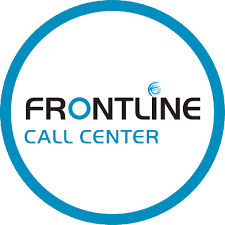Forced Labor and Proving the Negative with U.S. Customs
The pressure on U.S. companies importing goods from overseas to document that their supply chains are free from forced labor has never been greater or more critical. In June 2022, the Uyghur Forced Labor Prevention Act (UFLPA) was enacted into law. To date, this is the only federal law in the U.S. focused specifically on Environmental, Social & Governance (ESG), and it passed by overwhelming majorities in both houses of Congress. Ongoing expansion of the global economy and the devastating impact of the COVID-19 pandemic on supply chains have contributed to enhanced risks and probabilities that forced labor will penetrate a company’s supply chain. The U.S. government has pledged to strictly enforce the law and eliminate trade in goods made with forced labor, requiring companies now, more than ever, to focus on responsible sourcing and documenting their risk mitigation strategies. For this reason, it is imperative that importers have a comprehensive process in place to fully vet their suppliers, including confirming that the supplier can verify the sources of all inputs used in the manufacture or production of the imported merchandise. Companies effectively need their supply chains to be “comply chains.”
“The U.S. has long denounced the use of forced labor in the production or manufacturing of imported goods,” said Damon V. Pike, who leads the Customs and International Trade Services group at BDO. “Specifically, the Tariff Act of 1930 prohibits the importation of merchandise mined, produced or manufactured, in whole or in part, in any foreign country by forced or indentured labor, including forced convict or child labor. At the international level, the International Labour Organization’s 1998 Declaration on Fundamental Principles and Rights at Work sets out the commitments and obligations of its members to eliminate all forms of forced labor, child labor and employment discrimination.”
What is Forced Labor?
Forced labor is defined as any work or service exacted from an individual under the menace of a penalty for nonperformance and for which the worker does not voluntarily offer to work or provide services. In effect, forced labor exists where coercion, intimidation, violence or other means are used to compel an individual to work. Included within the scope of this definition is indentured labor, which U.S. Customs and Border Protection (CBP) defines as “work or services performed pursuant to a contract, the enforcement of which can be accomplished by process or penalties.” Forced or indentured labor involving children is also included.
Enhanced Forced Labor Enforcement
Forced labor has attracted increasing scrutiny by governments, regulators, human rights organizations, investigative journalists, consumers and investors. Some jurisdictions have introduced policies, trade rules and/or legislation that ban products made with forced labor from entering their borders and others require businesses to take steps and report on measures taken to mitigate the risk of forced labor in their supply chains. A few examples include the following:
- Australia: The Modern Slavery Act 2018 requires entities based or operating in Australia with annual revenue exceeding A$ 100 million to report annually on the risk of modern slavery in their operations and supply chains, as well as actions taken to address those risks.
- EU: In addition to directives that target forced labor, the European Commission has proposed a regulation that would prohibit products made with forced labor from entering the EU market. Starting in 2024, the EU Corporate Sustainability Reporting Directive will expand the obligations of companies required to prepare non-financial reports, as well as the types of companies required to report. Specifically, the directive will require all large entities and small and medium-size public companies to report on a broad range of environmental, social and human rights and corporate governance issues.
- UK: The 2015 Modern Slavery Act requires companies with revenue of more than GBP 36 million and that supply goods or services and operate all or part of their business within the UK to publish all steps that the organization has taken to guarantee that forced labor does not take place within their supply chains.
Although the U.S. Tariff Act of 1930 prohibits the importation of goods made in whole or in part with forced labor, until 2016, the act contained a broad exception. The exception allowed the importation of certain forced labor-produced goods if the goods were not made “in such quantities in the United States as to meet the consumptive demands of the United States.” The “consumptive demand” exception provided suspected violators with a defense to forced labor enforcement actions. This changed with the enactment of the Trade Facilitation and Trade Enforcement Act of 2015, which repealed the consumptive demand exception after going into effect in 2016.
Withhold Release Orders (WROs)
The elimination of the consumptive demand exception led to a noteworthy increase in the number of U.S. enforcement actions identified as WROs. A WRO is the mechanism through which CBP can detain merchandise based on information that reasonably indicates the use of forced labor and gives the importer 90 days to disprove the allegation or face the potential seizure of the merchandise. While CBP has focused on products from China including polysilicon, cotton and tomatoes, WROs have been issued on shipments from other countries relating to products such as palm oil and gloves from Malaysia, tomatoes from Mexico and sugar from the Dominican Republic.
Uyghur Forced Labor Protection Act
Heightened concerns about the treatment of the Uyghur minority in the Xinjiang Uyghur Autonomous Region (XUAR) region of China prompted the U.S. Congress (with overwhelming support from both sides of the aisle) to enact the UFLPA in 2021, with the new law becoming effective in June 2022. The UFLPA creates a rebuttable presumption that:
- All products mined, produced or manufactured in whole or in part in the XUAR (or with Uyghur minorities working anywhere in China under forced labor conditions) are made with forced labor.
- Effectively bans imports of all finished goods produced in the XUAR.
- Extends to any product of China made with inputs from the XUAR using forced labor, as well as any goods manufactured outside of China that contain inputs originating in the XUAR.
The enactment of the UFLPA significantly raised the stakes for importers of goods originating in China especially because now any good originating in whole or in part from XUAR is presumed to be made with forced labor. Many producers in China use raw materials from XUAR but any finished good produced anywhere is also subject to UFLPA.
The UFLPA also requires that importers demonstrate due diligence, effective supply chain tracing and supply chain management measures (down to the raw materials) to ensure they do not import any goods covered by the UFLPA. Importers need to have robust and comprehensive supply chain tracking processes in place to be able to rebut the presumption of forced labor for any shipments from the XUAR region. Enforcement of the legislation is expected to intensify and implementing regulations are being drafted.
The U.S. government’s determination to enforce the UFLPA was recently underscored when the Senate Finance Committee announced a probe into the U.S. automotive industry’s supply chain. The probe targets mining and materials and was initiated, in part, by a U.K. university study finding that numerous automakers were linked to Chinese companies located in XUAR. The study focused on silicon, steel, copper and aluminum. Silicon is of particular interest because China produces roughly 70% of the global supply of silicon and the XUAR alone may account for up to half of the world’s polysilicon. Silicon is a critical component in the production of semiconductors which, in turn, are a key input in automobiles and electronics (and other items that use electronics, such as industrial machinery).
Risks to Companies
Importers should realize that if an allegation of forced labor is made against goods they import into the U.S., it may be too late to investigate whether those goods were made in whole or in part by forced labor given the potential challenges of mapping an entire supply chain in a 30-day time period (the time allowed under the statute once CBP identifies a particular shipment and withholds entry). Such a task is time- and resource-consuming, especially given the need to track each supplier and vendor in the chain and confirm the country of origin of each raw material used in making the finished goods.
Each supplier must be able to fully document the origin of each input and be able to provide a detailed description of their supply chain and chain of custody from the raw material to the imported good. This chain of custody must include a list of suppliers associated with each step of the production process and be supported by transactional and shipment documents. Having such a process would demonstrate the requisite level due diligence needed to avoid the importation of goods made in whole or in part with forced labor and provide evidence against the presumption of forced labor for products, including components or raw materials thereof, originating in the XUAR. In essence, the importer must validate the origin of all raw materials and the finished good. Finally, importers should use this opportunity to confirm that CBP’s rules for “substantial transformation” are met to properly declare the country of origin of the finished good upon import.
Accordingly, importers should proactively assess their supply chain risks associated with sourcing procedures, as well as the risk that materials, parts, or components are sourced from suppliers using forced labor from the XUAR in violation of the UFLPA. Additionally, importers should verify that their suppliers can sufficiently document the origin of the material inputs used in the production of their imported products.
To rebut the presumption of forced labor for goods of XUAR origin, importers must respond to all CBP requests for information about merchandise under review and demonstrate by clear and convincing evidence that the goods, wares, articles, or merchandise were not mined, produced, or manufactured in whole or in part by forced labor. And, as explained above, the UFLPA also requires that importers demonstrate due diligence, effective supply chain tracing and supply chain management measures to ensure that they do not import any goods that fall within the scope of the UFLPA.
To successfully rebut the presumption of forced labor, importers must be ready and able to produce documentation clearly demonstrating the following:
- A due diligence system or process;
- Tracing the supply chain from raw materials to imported goods;
- Information on supply chain management measures;
- That the goods were not mined, produced or manufactured wholly or in part in XUAR; and
- That the goods originating in China were not mined, produced or manufactured wholly or in part by forced labor.
The documentary requirements importers must meet to rebut the presumption of forced labor are extensive and include the following:
- Engaging with suppliers and other stakeholders to assess labor risks;
- Mapping of the supply chain from raw materials to production of the imported goods;
- A written supplier Code of Conduct and monitoring of supplier compliance;
- Independent verification of the implementation of a due diligence system;
- Affidavits from each company or entity involved in the production process;
- Purchase orders, invoices, packing lists, certificate of origin, payment records, shipping records, warehouse receipts, etc. for merchandise and components thereof;
- Internal controls to prevent or mitigate the use of forced labor;
- Information on wage payments and worker production; and
- Audits to identify labor indicators and remediation, if applicable.
How Companies Can Mitigate Their Risk of Exposure
To prepare for this sea change in the way CBP operates, companies should consider taking immediate steps to develop an effective source tracing program and be able to comply with the documentary requirements well before goods are detained by the agency. Such steps include:
- Risk-based mapping – conduct risked-based mapping of supply chain partners that outlines the supply chains in their entirety, including regions, suppliers, etc., that the importer feels pose the most risk to validate the supply chain is free from the use of forced labor.
- Code of Conduct – develop a Code of Conduct statement that represents the importer’s position against the use of forced labor within any part of their supply chain. The statement should be implemented by import/export compliance procedures and policies that are assessed and updated on a regular basis.
- Execute policies – perform unredacted audits of high-risk supply chains and have mechanisms in place that evidence the supply chain is completely free of forced labor. Documentation of these audits and mechanisms is crucial in the event CBP and other government regulators request the evidence of no forced labor.
- Due diligence and training – provide training to employees and suppliers, have a documented and comprehensive social compliance system in place that demonstrates the company’s commitment to its Code of Conduct and prevent any partnering with any party that uses forced labor or does not have equally stringent control measures in place.
- Remediation planning – have a remediation plan in the event the company identifies forced labor in its supply chain. The remediation plan should include a process for obtaining alternate sourcing and diversification and other clear action steps to rectify the issue, as well as tools to identify vulnerabilities in the compliance process. Information on the remediation plan must be provided to CBP upon request.
Taking the above steps can not only help companies avoid the loss of time, sales and reputation if CBP excludes their merchandise because of a finding of forced labor, they are necessary for the company to remain eligible for beneficial treatment under CBP’s Customs Trade Partnership Against Terrorism (CTPAT) Trade Compliance program. Benefits under CTPAT include shorter wait times at the border, front of the line inspections, possible exemption from examinations and business resumption priority following a natural disaster or terrorist attack. For trade compliance professionals, these benefits provide support in carrying out their daily duties to help keep the supply chain running smoothly.
As demonstrated by the recent U.S. Senate probe of automobile manufacturers, certain commodities are considered by the U.S. government to be subject to a high-risk of forced labor. In addition to agricultural products, minerals, chemical and textiles/apparel, polysilicon is at the top of the list given that half of the world’s known supply comes from XUAR. Given its use as the key building block of semiconductor chips, the import of any item containing chips—which are ubiquitous in consumer products, including automobiles, electronics, solar panels and electric vehicle batteries—are ripe for targeting by CBP. For polysilicon, an importer must provide complete records of transactions that identify all entities involved in the manufacture, manipulation or export of a particular good and the country of origin of each material used in the production process. This includes flow charts mapping each step of the procurement and the production of all materials, going back to the locations of the quartzite used to make polysilicon, the location of the manufacturing facilities producing the polysilicon and the locations of the factories producing downstream products used to make imported goods.
Perspectives
In summary, importers must have robust supply chain mapping and source tracing mechanisms in place to be able to know exactly where their products are sourced (including any raw materials), where they are produced and by whom. Importers must also be prepared to document their engagement with suppliers and their assessment of forced labor risks, as well as remediation measures. If CBP invokes a presumption of forced labor against any products being imported into the U.S., the importer must be prepared to rebut the presumption within 30 days. They must have sufficient documentation to respond to CBP’s request for information regarding the exact shipment and exact merchandise that is being detained. Failure to do so could result in potential seizures or the exclusion of goods, a loss of sales and revenue, and—most importantly—a negative and potentially irreversible impact on the company’s overall brand and reputation.
Written by Damon Pike. Copyright © 2023 BDO USA, LLP. All rights reserved. www.bdo.com



